The autumn period is associated with the mass of hassle in the garden and in the garden. Strawberry is also no exception, because at this time it is recommended to breed a berry culture. But in order for the strawberry successfully survived the winter period and start an active fruit in the next season, it is important to know all the features of the cultivation of perennial: from the preparation of seedlings and the site to land up to the nuances of the culture of culture in the autumn period. So what should be done with strawberries in the fall? When it is better to disseminate young seedlings and, what care to provide them? All nuances of autumn work with strawberries on the plot - in this selection of material. A step-by-step instruction of planting and leaving the plant will allow to grow a berry culture on its garden even a novice amateur gardener.
Advantages of autumn planting strawberries
As you know, planting strawberries can be carried out in spring or autumn. Every time of year has its own characteristics and advantages. Consider all the "pros" of autumn planting strawberries in an open ground.
- Landing strawberries in the fall is considered the most successful and acceptable time for active breeding of the berry culture. At this time, the landing time is quite stretched in time and gardeners can carry out all agrotechnical activities within 1.5-2 months, which is important with great employment or significant work amounts.
- In addition, in the fall of the gardeners a lot more landing material than in spring time. Over the summer, adult bushes of strawberries form many mustache, whose daughter sockets are safely rooted throughout the growing season. To the planned landing time, such strawberry sockets are fully prepared for landing for a new place.
- The next advantage of autumn landing is the fact that the strawberry planted in the fall, the next year begins to be actively fruit. With the spring time of planting fruiting berries will have to wait for at least a year.
- Another argument in favor of autumn planting - soil for the summer period is well warmed, and therefore, strawberry saplings will be easier to root, rather than in the spring, when the soil is still unstable after the winter and there is a threat of return freezers.
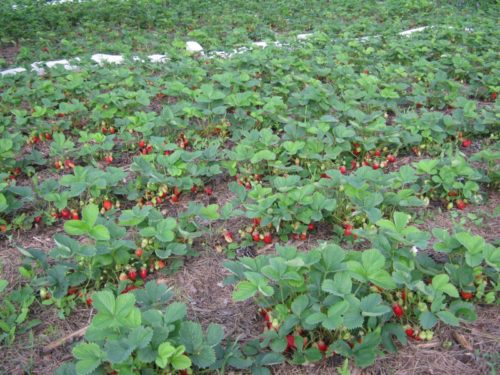
Strawberry landing deadlines in autumn
When is it better to put strawberries in the fall?
- Autumn strawberry landing, as a rule, falls for the period from the end of August to early October. These dates are not mandatory and 100%, as it depends on the weather conditions and climate of the region.
- So, in the southern regions, with a warm and mild climate, strawberries can be bold until the end of October-month, in the regions of the middle strip of Russia - landing work should be finished until the end of September, but in Siberia - strawberry landing is carried out at the end of summer. This is explained by the early frosts, after which, lately planted and not yet rooted finally, strawberries, can hardly be successfully overwhelmed.
- According to the lunar calendar, the best time for planting or replanting strawberries is the period: in August - after the 25th, in September - up to the 15th day.
- The main conditions under which the autumn landing is possible is the presence of warm weather, heated soil and 1-1.5 months before the onset of cold weather. It is very important to take into account the alleged frosts so that young strawberry seedlings manage to root, adapt in a new place and prepare for winter.
- Strawberry is considered a fairly frost-resistant plant capable of carrying frosts to -30 0C (under snow or other shelter) and up to -15 0With (without shelter). In any case, a huge variety of a berry culture allows you to choose the most suitable variety of strawberries for each region.
Preparatory work to landing strawberries in the fall
Before starting to plant strawberries, you should choose the most favorable landing area, after which it is properly to prepare the garden and directly the planting material itself.
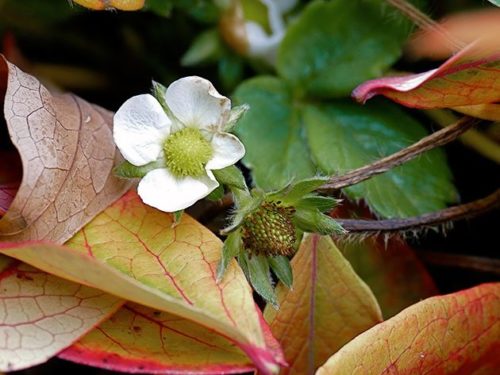
Preparation of strawberries to landing in the fall
The preparation of strawberries in the fall to the landing includes: the selection of seedlings for planting and prestanding treatment of seedlings.
- Young strawberry seedlings of one or another variety can be purchased in specialized stores, nurseries or use the daughter-rosettes of strawberries with their own bed.
- For the cultivation of young strawberry sockets, it is necessary to leave the best, healthy bushes, with large delicious berries, the very first mustache and, if necessary, to touch them for further rooting. The remaining mustache in the strawberries is cutting off so that they do not "take" the power and ensure a rich harvest. After rooting, the grown outlets cut off from the "maternal" mustache and plant on a new place.
- When breeding strawberries, it is not necessary to take out rosettes from abundantly fruiting bushes this year, as they are unlikely to give promising for planting a socket: in one vegetation period, the bush can either "give" a full yield of berries or full seedlings.
- By purchasing strawberry seedlings, attention should be paid to their appearance: the plant should not have signs of the disease or damage. A high-quality healthy strawberry seedling has about 3-4 x, well-formed, leaflets, the diameter of the root neck of more than 5 mm and the roots of the roots, a length of at least 10 cm. If the roots are longer than the specified value, it is better to cut them a little, and cut off the extra leaves. The seedling should not be sluggish, and the roots are not dry. The acquired seedlings of strawberries need to be as soon as possible to fall into the ground, not allowing the drying of the roots. If there is no possibility of rapidly planting strawberries, - seedlings should be picked into a wet loose soil in a shaded place.
- Immediately before planting strawberry seedlings into the ground, the roots of the seedlings are lowered in the "bolt" from humoring, soil and growth regulator. The consistency of the "Bottok" resembles a liquid sour cream, so all the listed ingredients must be diluted with water to the desired thickness. As for growth regulators, any drug, type "epina", "zircon", "corneser" can be used. This technique can significantly speed up and improve the survival rate of the plant in a new place.
Selection of strawberry varieties for autumn
If strawberry seedlings are bought in specialized points of sale, it is important to choose the most adapted, zoned, yield and delicious strawberry grade. Seedlings grown in the terrain where landing is planned, will be the most adapted to local conditions.
When landing, it is best to plant several varieties with different times of maturation, then the strawberry harvest can be assembled, starting from the end of the spring and ending in late autumn.
Consider the proven and most popular varieties of strawberries in our country.
- Cultivat on the site can be both ordinary varieties of strawberries and its repairing varieties, allowing fruit several times a year.
- The most popular and common in domestic gardening are such varieties: "Giant Georna", "Elasanta", "Gianthal Maxi", "Albion", "Bereginy", "Elan F1", "Clery", "Holiday", "Crown", "Queen Elizabeth II", "Bogota", "Everest", "Marshall", "Queen", "Brighton", "Cardinal", "Masha and many others.
- Excellent proven such high-yielding and hardy varieties for open soil are proven:
- Strawberry grade "Zarya" - early, yield and frost-resistant. Appreciated for high flavoring indicators.
- Strawberry variety "Rusakovka" - over early, high-yielding, resistant to disease. Middle sized berries, juicy and very tasty.
- Strawberry grade "Desna" - resistant to diseases, but weakly transportable. Berries are large, sweet and fragrant.
- The strawberry variety "Pokalontas" is an average early, hardy, well-transportable and high-yielding. Berries rounded conical shape, sour-sweet and juicy.
- As for the removable strawberries planting in the fall, the best varieties are recognized as follows:
- The strawberry grade "Ali Baba" is highly resistant to diseases and pests. Easily endures a transplant and quickly coming up in a new place.
- Sort of strawberry "Alexandria" - a crop, hardy. Juicy berries, large with high taste.
- Strawberry grade "Forest fairy tale" - removable, high-yielding and unpretentious. Berries are small but numerous.
- Strawberry grade "Temptation" - stress-resistant and yield. Berries are large and very tasty.
- Strawberry grade "EVI-2" - a large-scale, yield, resistant to diseases and pests. Berries are large, juicy, fragrant.
Preparation of Places to Landing Strawberries
If a strawberry is planted for a bed for the first time, it is important to initially choose the place for planting berries, as the culture will grow in one place at least 4 years.
- The place for planting strawberries should be sunny, open and protected from wind. The lack of heat and light will negatively affect the flavors of the berries; In the shadow of strawberries there will be sour and small. The optimal version is the south-west side, with a slight bias of a plot for 2-3 0.
- It should not land with strawberries in the places of possible flooding, in lowlands where water will accumulate and on sites with close grounding of groundwater. On the wetlands, strawberries also grow, will not be able.
- If the strawberry planted on the site for the first time, it is important to take into account which cultures grew to it on the garden. The best predecessors will be vegetables such as: peas, carrots, onions, garlic, beans, beets and radishes. Do not land a strawberry on the site where cucumbers, tomatoes, potatoes, peppers, eggplants or raspberries grew to it. Strawberry will also be desirable.
- Useful precursors for strawberries will be any green fertilizers - Siderats. To do this, on the plot where the planting of a berry culture is planned, sown mustard or lupine, whose green mass is mounted in summer and mix with the top layer of soil. Siderates contribute to the improvement of the structural and qualitative composition of the soil, the enrichment of the soil with nitrogen, the prevention of pests.
- The soil for strawberries should be moderately fertile and easy, with a pH level of about 5-6. In the acidic soil, lime is added, at the rate of 5 kg per 1m 2. The most favorable is sandy or sandy-loomed soil with a humus content not higher than 3%.
- If the site is infected with larvae of the Colorado beetle, a wire and other insects, a month before the estimated landing of strawberries, the soil is shedding with a suitable solution of insecticide. For these purposes, it is possible to use such drugs as "confident", "Marshal", "Bazedin".
- Plot for planting strawberry seedlings is preparing, approximately for 2 weeks. The land on the garden is drunk to a depth of about 30 cm, organic and mineral fertilizers contribute. It is perfectly suitable for humus or overwhelmed manure (at the rate of 10-20 kg per 1 m 2). From mineral feeding, potassium chloride or superphosphate (at the rate of 15 -20 g per m 2).
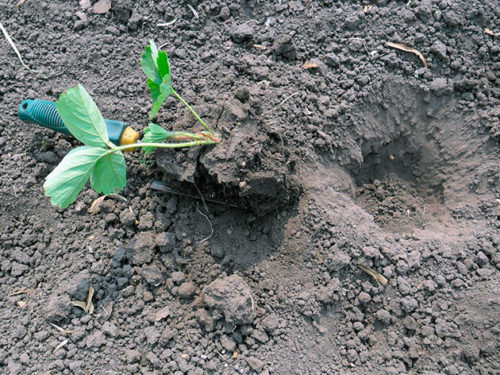
Strawberry landing technology in autumn
Strawberry landing technology is no different from the same procedure carried out in spring time. As already labeled above, the first thing the gardener is preparing planting material and a place for planting strawberries. When all preset works are finished, - you can start directly to planting young seedlings.
How to put strawberries in the fall?
It is absolutely not difficult to grow strawberries and even the novice gardener, but certain landing rules still need to know and take into account during the work.
- It is best to plant strawberry saplings in the evening or on a cloudy day, providing, thereby, the optimal survival rate of the plant. At the same time, seedlings prepared for landing should be in a wet privacy. Peresked, sluggish bushes with lifeless roots should not be used as a landing material, as they are most likely not fitted on the garden.
- Looking out strawberries in the fall in advance prepared and spilled water wells or rows. So that the rows looked at the garden gently and smoothly, it is better to make a furrow on a pre-stretched cord.
- The seating area is recommended to be pre-divided into strips consisting of narrow raised beds (where seedlings) and wider tracks will be planted (performing the role of aide).
- Strawberry planting scheme can be different, depending on the size of the bed, landed strawberry varieties and cultivation conditions. Usually, in large areas, the gardeners hold the interval of about 60-80 cm in a broadcast and 20-25 cm between seedlings in a row. With such parameters, the plant is quickly closed, it is well tolerated wintering and successfully fruit.
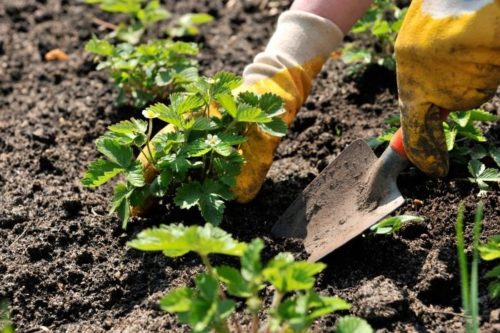
- With minor plantations, where you need to save the area, a two-line planting scheme is practiced, with the same interval between the "row rows" and between the bushes (approximately 30 cm). Moreover, two seedlings of strawberries are planted at one hole at once so that the bush is large, volumetric and good fruit.
- In the well or groove, spilled water, strawberry seedlings vertically exhibit vertically, after which the root falls asleep to the level of the so-called. "Heart" (root neck) Sedna, which should remain on the surface of the Earth.
- The landing site of strawberries slightly compacted so that there are no "air pockets" left, after which the site is best to immediately meditate. A peat, wood sawdust or humus can be used as a mulch.
Experienced gardeners with mass plantings of strawberries are conditionally divided by a plot into several (3-4) parts, providing periodic rejuvenation of culture and the right crop rotation. For this, one part time in 3-4 years old in the spring is seeded by Siderats, after which it is on this place, in the fall, planted with strawberries, and the next year they do the same in the next part, etc.
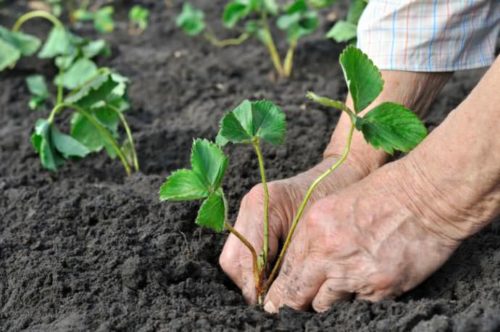
Strawberry landing in autumn on agrofibur
In addition to the usual planting of strawberries in the open soil (in a garden), there are several variants of cultivation of many years of berry culture. Consider one of the alternative ways to plant strawberries using agrovolok.
How to put strawberries in the fall on agriculture?
- Landing strawberries on agrofiber allows not only to reduce labor costs in the process of growing berries, but also to increase the yield of culture by 2-3 times.
- The agrofiber is a black, environmentally friendly, film that helps to avoid the appearance of weed grass, protects against drought, overwhelming and other little pleasant phenomena. This underfloor material is air and water resistant, resistant to ultraviolet rays. In the case of the use of agrofiber - the plot is not necessary to mulch. At the same time, berries remain clean and attractive.
- Planning the size of the garden, it should be correlated with the parameters with the size of the agrofiber so as to cover the area for strawberries of one strip of the material. When the film is shortage, the band should be connected to the flask, with a margin, about 20 cm.
- Pre-present garden preparation is no different from the usual landing: the soil is drunk, fertilize and smash. This planting technology seedlings liberate gardens from the annual soil loosening for the next 4-5 years.
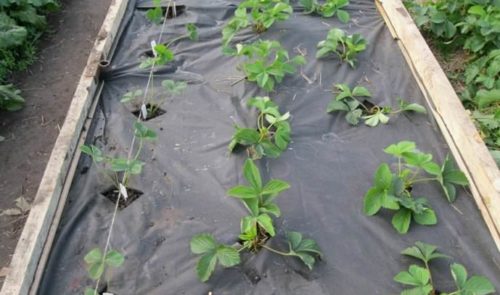
- After that, the plot is covered with strips of agrofiber, fixing it to the ground with thick wire "hairpins" (the length of the unfolded wire is about 60-80 cm so that they can be half into the ground) around the perimeter and the shelney lines. Additionally, it is possible to strengthen the film by adding along the edges and in the corners of stones, boards or sprinkle the earth.
- The next stage lies in the designation of the place of landing of strawberry seedlings. For this, chalk draw tags on the black film, on the site of which cruciform cuts make a knife. The corners resulting from cut turn out to be outward.
- In each section, they are preparing the wells, where strawberry seedlings are planted (landing technology is discussed above). At the same time, the angles of the film bend in the hole, after which the hole is sprinkled with soil, and the planted young bush strawberry is watered with water.
- Strawberry beds in the fall, landed on agriched, look very carefully and well maintained. In this case, it is convenient to trim the not necessary mustache or, on the contrary, rooted the desired strawberry mustaches, not allowing the uncontrolled spread of the culture throughout the site. To roighten the daughter sockets, most often use disposable cups filled with soil.
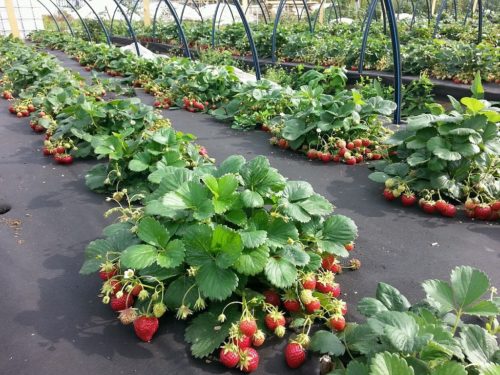
Strawberry transplant in autumn
When to transplant strawberries in the fall?
Strawberry transplant to a new place every 4-5 years, as well as as necessary (in the case of landing new plantations or expansion of old). Growing a culture for more than 5 years in one place, there is a sharp decrease in the yield of berries, increasing the incidence and aging of strawberry uterine bushes. Such a strawberry is in dire need of rejuvenation and transplant.
- Strawberry can be transplanted at any time throughout the growing season. But it is best to do this in the fall, when the weather is not so hot and sultry, as in the summer, the soil is well warm and moistened due to natural precipitation, and strawberry sockets are large and well developed.
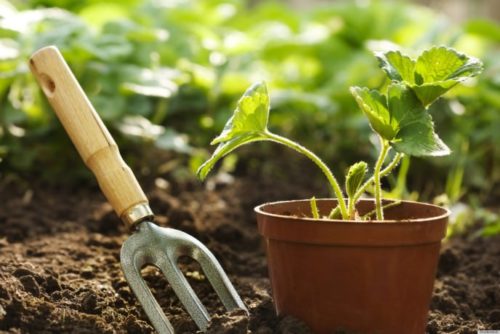
- As a rule, the transplanting time of young strawberry seedlings falls at the end of August - the beginning of September. More specific terms depend on the climatic conditions of this or that region.
- Strawberry Conditions and Technology are no different from those when landing seedlings (description above).
- Strawing old bushes of strawberries with large weighing roots absolutely meaningless. Only young (annual or two-year) bushes of strawberries need to transplant.
- As for the transplantation of removable varieties of strawberries, which, as a rule, begins to be active re-fruiting, the harvest will have to donate.
Strawberry Care Autumn
Soldering strawberry seedlings, it is important to provide young plants with proper care that allows you to increase the powerful root system, to successfully adapt in a new place and prepare for the upcoming wintering.
Consider all the agricultural events needed by strawberry culture in the autumn period.
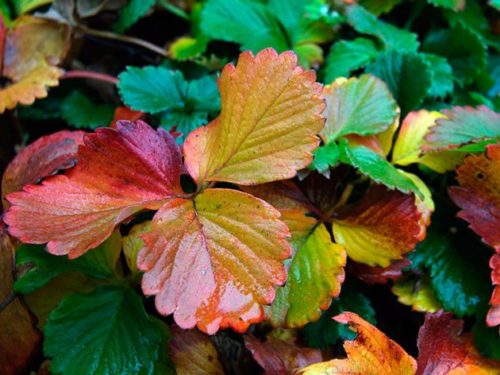
Watering strawberries in autumn
- Like any other, a newly planted plant, strawberry seedlings immediately after planting needed in reinforced watering. Subject to the absence of natural precipitation, the bushes are watered 2-3 times a week.
- The satisfactory norm of irrigation can be considered constantly moistened soil. After rooting seedlings, the irrigation rate is reduced by approximately twice.
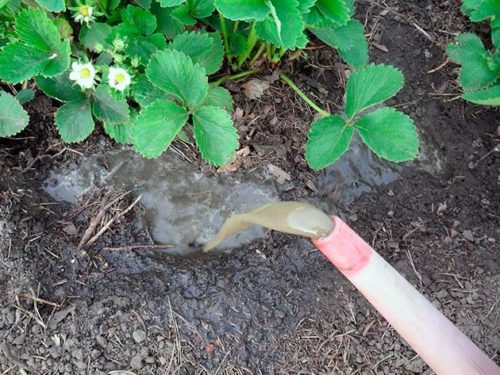
- Having moisthed culture, strawberries, still reacts poorly to excess moisture: berries rotate, the plant can affect the fungal disease.
- Watering is carried out in the morning or in the evening, trying not to fall on the leaves of strawberries. After irrigation, the ground looser or mulch.
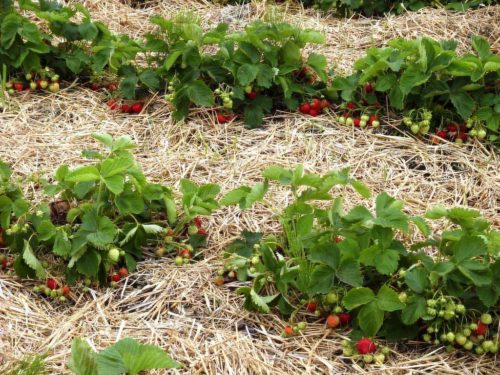
Standard strawberry in autumn
- Fertilizing the strawberries follows the 2nd and subsequent years after landing. In the first year, fertilizers are entered into the ground directly when landing / transplanting strawberry seedlings, and this will be enough at the first time of the development of perennial.
- What to fertilize strawberries in the fall? For nutrient feeding culture, both mineral and organic fertilizers are excellent. From mineral complexes, preference is better to give phosphorous-potash complex fertilizers, which will ensure not only full nutrition to young strawberry bushes, but also prepare a plant for winter.
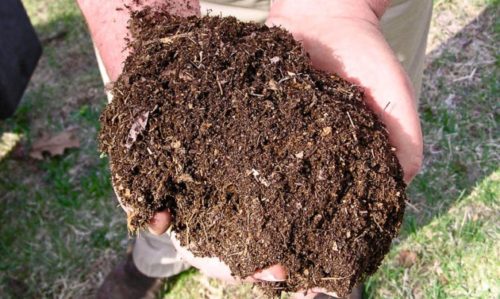
- After making fertilizers, strawberry bushes are required to pour, which will protect the root system from damage and evenly distribute fertilizer in the soil.
- Application in the fall of nitrogen-containing fertilizers is extremely not desirable.
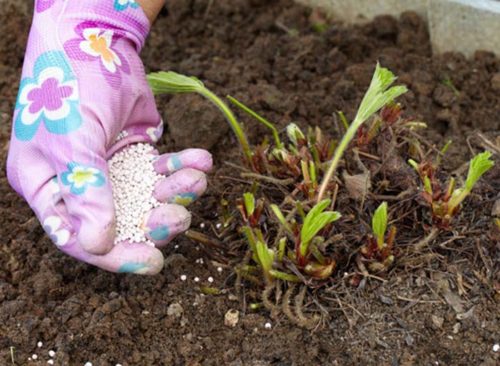
Strawberry processing in autumn
- In the autumn, strawberries needed additional processing that protects the plant from pests and diseases. Often, many insects and pathogens of diseases are in the upper soil layer of strawberry plantation.
- To get rid of unwanted "guests" - insects, the ground around the bushes is loosened to a depth of about 8 cm, after which they are shed a carbofos solution (3 tbsp. On 10 liters of water bucket). Water is best used slightly warm, but not higher than 30 0C. After such treatment, the area is covered with a film for 3-4 hours.
- In order to avoid infection of the plant's bushes, fungal diseases are performed by an additional processing of strawberry planting with a bordrian liquid solution (2%) or copper chlorocycism (1 tbsp. On 10 liters of water).
- There are also fairly effective folk remedies, allowing to fight pests and fungal infections. To prepare such a solution, you will need: 10 l a little warm water, 2 tbsp. Wood ash, 3 tbsp. vegetable oil (supplemented), 2 tbsp. table vinegar and 2 tbsp. liquid soap. All specified ingredients are thoroughly mixed and treated strawberry and soil bushes under them.
Pruning strawberries in autumn
- Not all strawberries landed in autumn needs pruning. If there are only 2-3 sheets on a young bush, it is not necessary to cut them. On the contrary, in the process of care, it is important to achieve a larger part of the outlet on the eve of winter cold.
- But the banging mustache appeared in the fall in the fall should be deleted anyway. The plant during this period should "spend the strength" only on the development and strengthening of the root system.
- Crop the strawberry fall after the fruiting of the bushes, and only in the case of thick, developed and well-wered landings. In addition, it is important to remove damaged or fallen foliage.
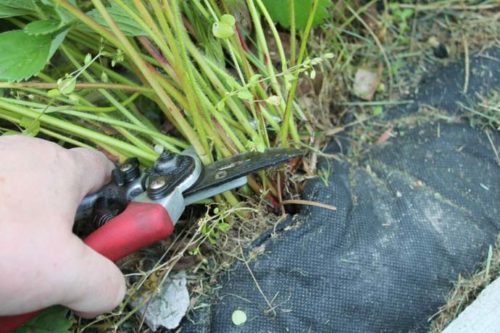
- It is important to know that the wrong, too low trimming, often becomes the main cause of damage to the growth bowl, disturbing the full development of the new foliage of strawberries. It is for this reason that the criticism of foliage is required extremely neatly, a clean tool, to a height of less than 8-10 cm from the surface of the soil.
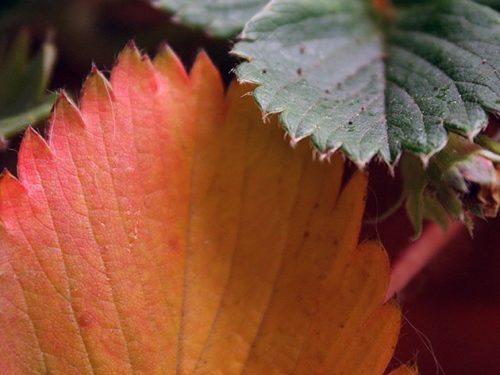
Strawberry Preparation for Winter
Preparation of strawberries for winter in the fall is one of the most important agrotechnical techniques that allow you to maintain a healthy and full-fledged culture in winter. The preliminary activities include the mulching of the plot and the shelter of the strawberry planting.
- Mulching of the soil is carried out by peat or humus, which will subsequently help prevent the frozen of the root strawberry system.
- In addition to mulching, the plot is covered with dry foliage, sawdust, sweetheart or straw. The thickness of the protective layer should be at least 5 cm. In the case of snowfalls, the plantation with strawberries will need to be sketched by about the same layer of snow, which will also reliably protect the plant from frosts.
- Some gardeners are used as an injection material. In this case, the main thing is to remove the film in the spring on time to prevent the plant and damage the rapidly developing strawberry bushes.
- Early spring accrehensible material from the plantation is removed.
- The frost-resistant varieties of strawberries cultivated in the southern regions, in additional shelter for the winter do not need at all.
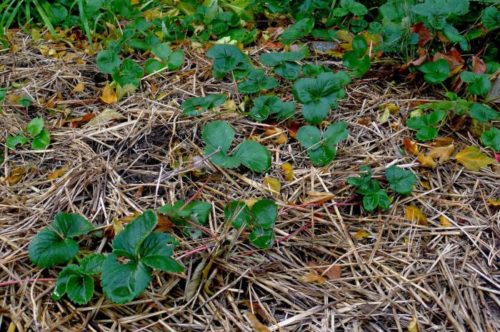
Thus, knowing all the features of planting and care for strawberries in the fall, each willing can grow this delicious, fragrant, and most importantly a very useful berry. Ripening one of the first, vitamin "bomb" allows you to fill the reserves of the strength and energy of a person weakened for the winter. The presence in the strawberry of valuable trace elements, antioxidants and vitamins make a berry not only with a tasty dessert, but also a real drug. The use of strawberry berries is shown when avitaminosis, hypertension, atherosclerosis, anemia, diabetes and other diseases.

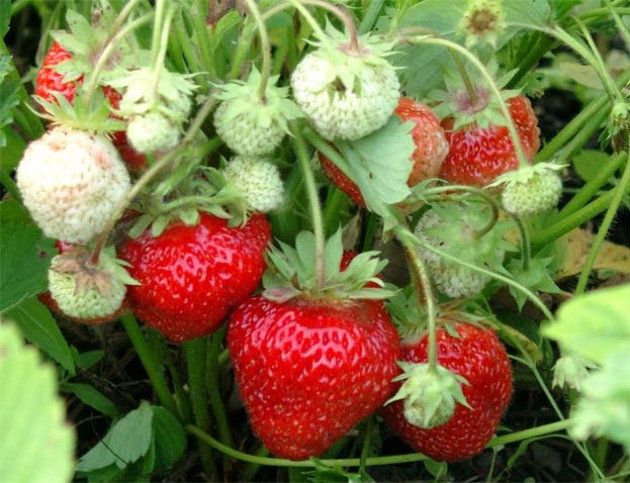
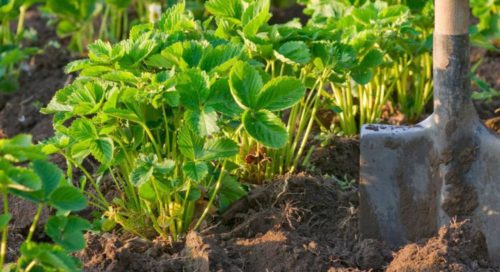
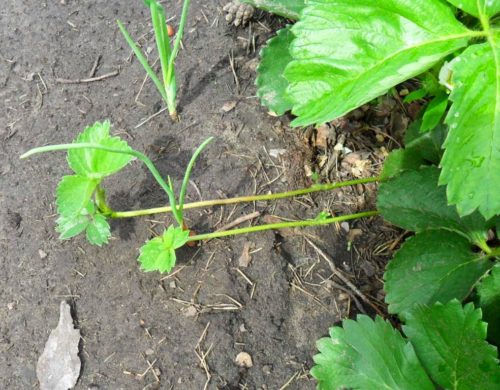
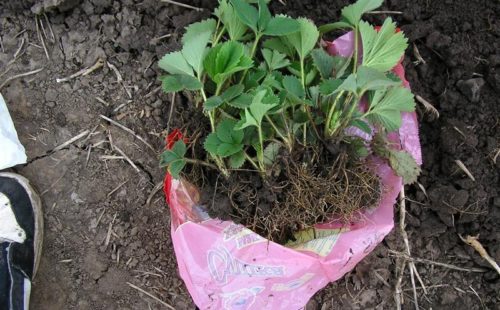
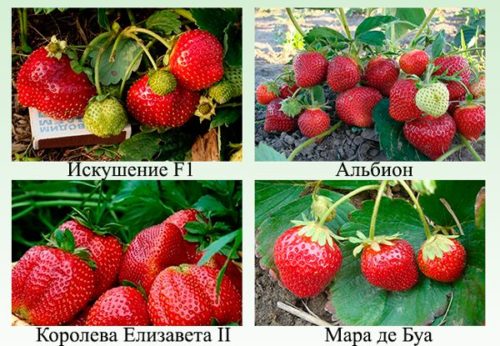
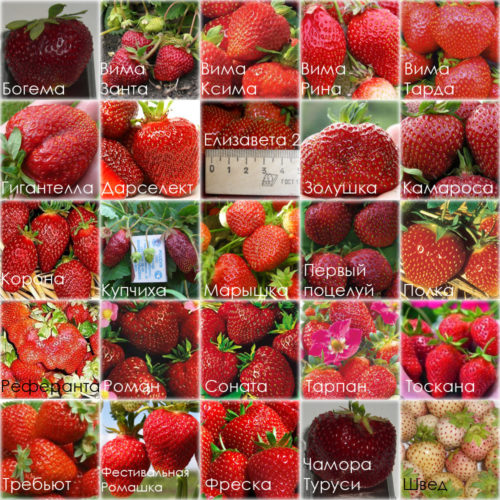
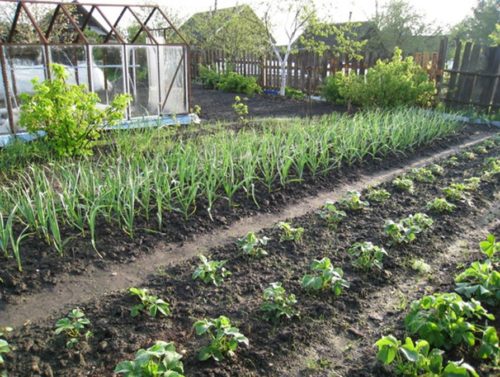
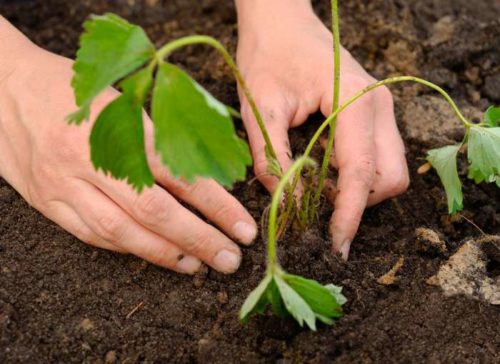
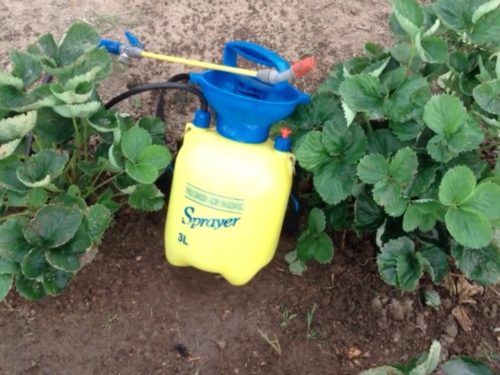
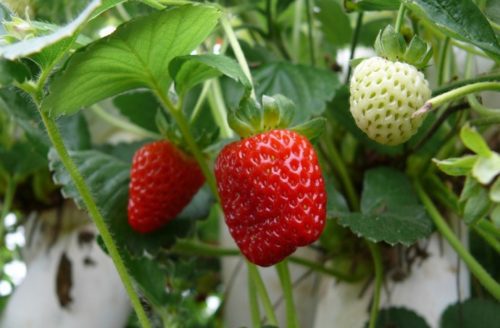
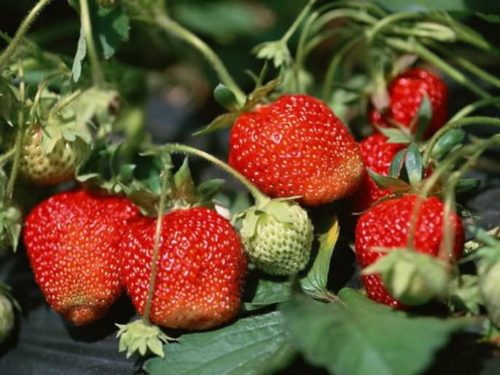
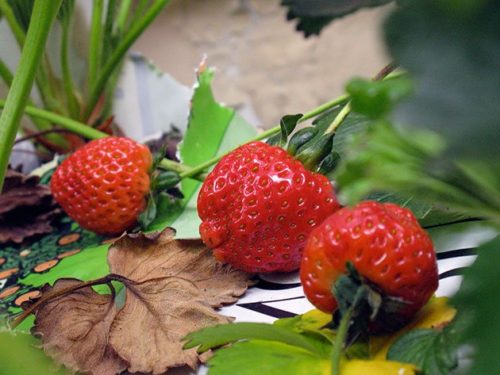
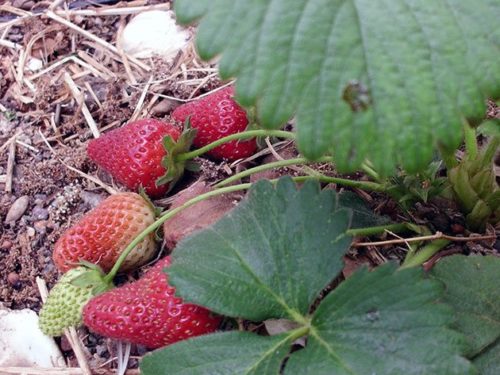
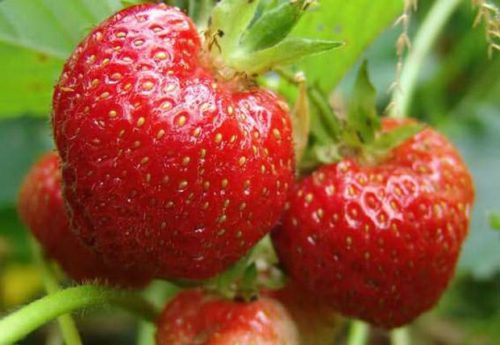












 Start a discussion ...
Start a discussion ...